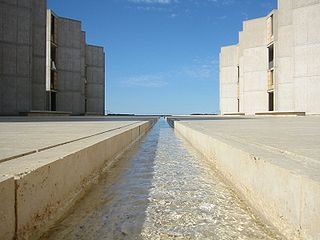Louis Kahn: The Power of Architecture
A coffee table book might offer a more in-depth look than an actual exhibition about famed architect Louis Kahn. This is especially true when viewing “Louis Kahn: The Power of Architecture” as most of the written context needed to form relationships between both Kahn’s architectural models and the many objects on display is missing from the actual exhibition. This creates a chaotic viewing experience that one might be better reading about than actually viewing!
On exhibit at the San Diego Museum of Art (SDMA) in Balboa Park is a traveling exhibition produced by Germany’s Vitra Design Museum. As organized the exhibit includes virtually all of the objects and images included from the sumptuous coffee table-like book published by the Vitra Design Museum but why?
One cannot not think of Kahn without thinking about his use of modular organization and his unique usage of cast in place, reinforced concrete construction. Of the many architectural models by Kahn on display, one can comprehend his logical ideas about spatial organization and modular forms but totally absent from the exhibition is the architect’s mindful contributions to the idea of buildings being efficient in both construction costs and deliberate functionality.

Jim Harper’s image of the Salk Institute, La Jolla, California, (2004).
License usage: (CC by-SA 4.0). https://creativecommons.org/licenses/by-sa/4.0/
Considered one of the architect’s major triumphs and a masterpiece of Kahn’s design methodology is La Jolla’s Salk Institute that was created in modular form and with low maintenance in mind. The Salk’s cast concrete buildings with teak wood trim are aesthetic, efficient machines planned in a straightforward manner—all set surrounding a spacious travertine courtyard featuring a water feature leading toward a magnificent ocean view.
As staged in the SDMA galleries by Dr. Ariel Plotek, SDMA’s Curator of Modern and Contemporary Art, the exhibit feels antithetic to Kahn’s sleekly minimal designs as the Vitra Museum’s offering is over crammed with too many off topic objects and ephemeral specimens that warrant a labyrinthine lay out for the SDMA venue.
A Josef Albers’s work with wood figuring from his late 1940s “multiplex series” is included in the exhibit as a referent to Kahn’s poured between wooden forms in-place concrete; although as no detailed visual image is included of Kahn’s subtle wooden figuring that remains from the wooden forms on the concrete of the buildings, the visual referent becomes a superficial visual analogy. The Albers image belongs in an esoteric essay about the uniqueness of Kahn’s cement finishes but not plopped into this exhibit. Other included visual analogies also might better appreciated by reading about than actually viewing in the exhibit are two etchings by Giovanni Battista Piranesi including one image of a hill of stones.
Another image documenting Gordon Matta-Clark’s “Conical Intersect” (1975) that also speaks to both Kahn’s National Assembly Building of Bangladesh, Dhaka (1959-1982) and the Indian Institute of Management, Ahmedabad (1962-1974) are also shoved into the exhibition but with only minimal peripheral context.
The many enigmatic booklets, letters, and magazine articles documenting Kahn’s career also distract from the real story of the architect as they are placed temporally rather than hierarchically, so they become collateral clutter when removed from the written essays needed to explain their presence. While themselves interesting specimens, so many such objects overwhelm the exhibition with too many scant, fleeting junctures rather than offer significant insight that might explain better Kahn’s contributions to design style, exploration of materials, or his real legacy to architecture.
How can an entombment of hoardings shoved into a clutter of galleries explain Kahn and his work being spare masterful creations made from light, space, and subtle textures?
“Louis Kahn: The Power of Architecture” on view 5 November 2016 through 31 January 2017 at the San Diego Museum of Art.
© 2016 by Kraig Cavanaugh

Kraig Cavanaugh lectures about art history—specializing in Modern & Contemporary Art—as well as being an instructor of color theory, design, and studio art. He has curated numerous art exhibitions, authored exhibition catalogues, and written art reviews for several other print and online journals including “Artweek” (USA) and “Selvedge” (UK) magazines. Cavanaugh is also an invited member of the Association Internationale des Critiques d’Art (United States division), which is an NGO in official relations with UNESCO.


